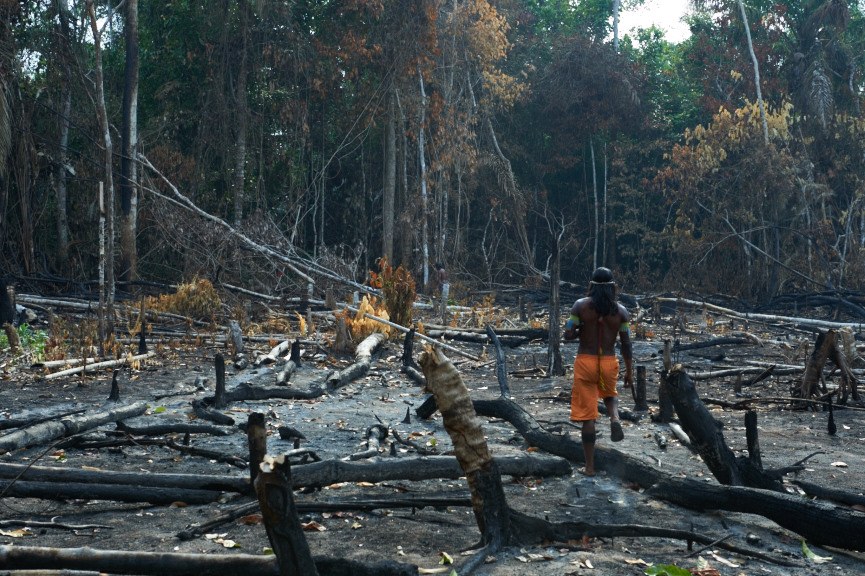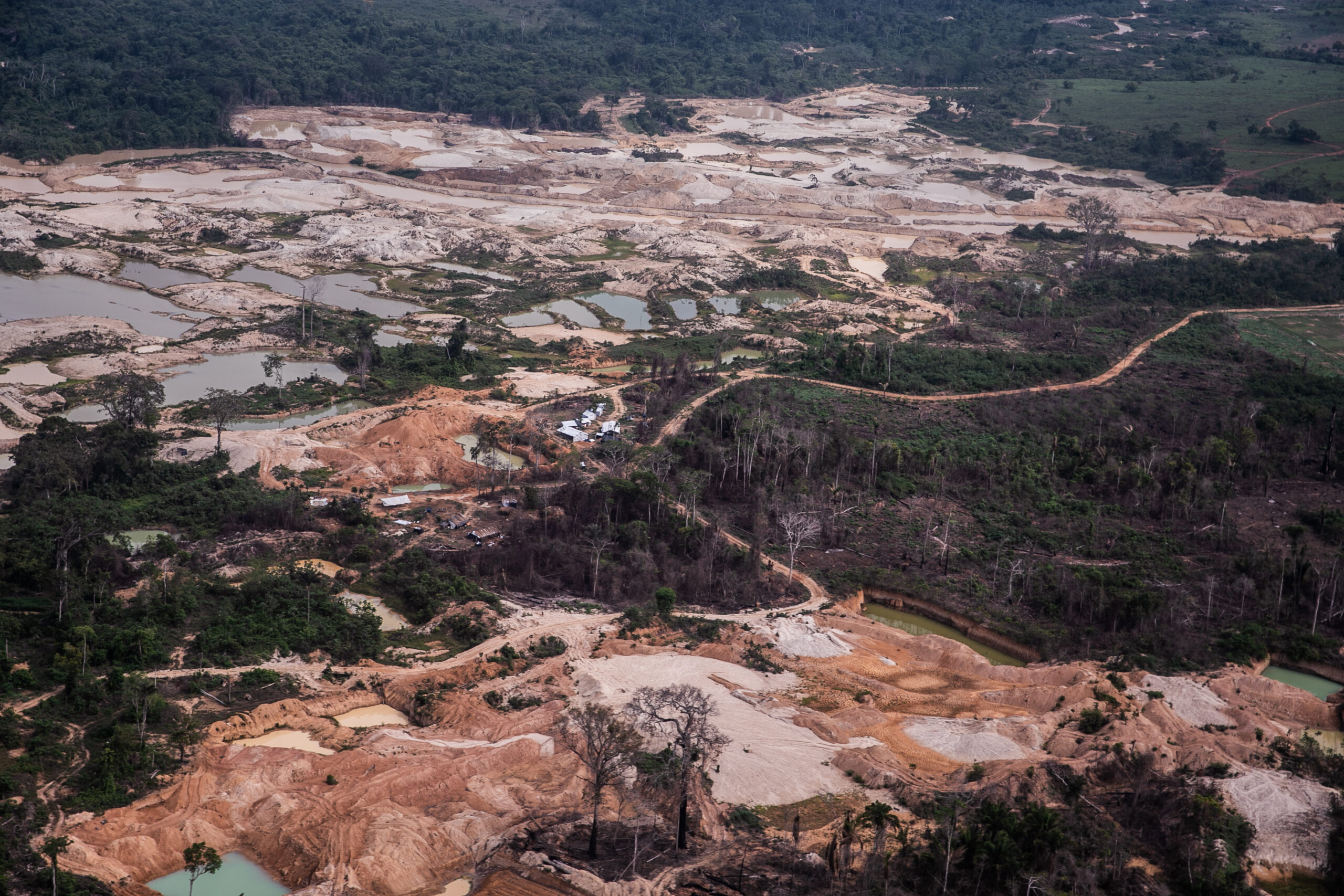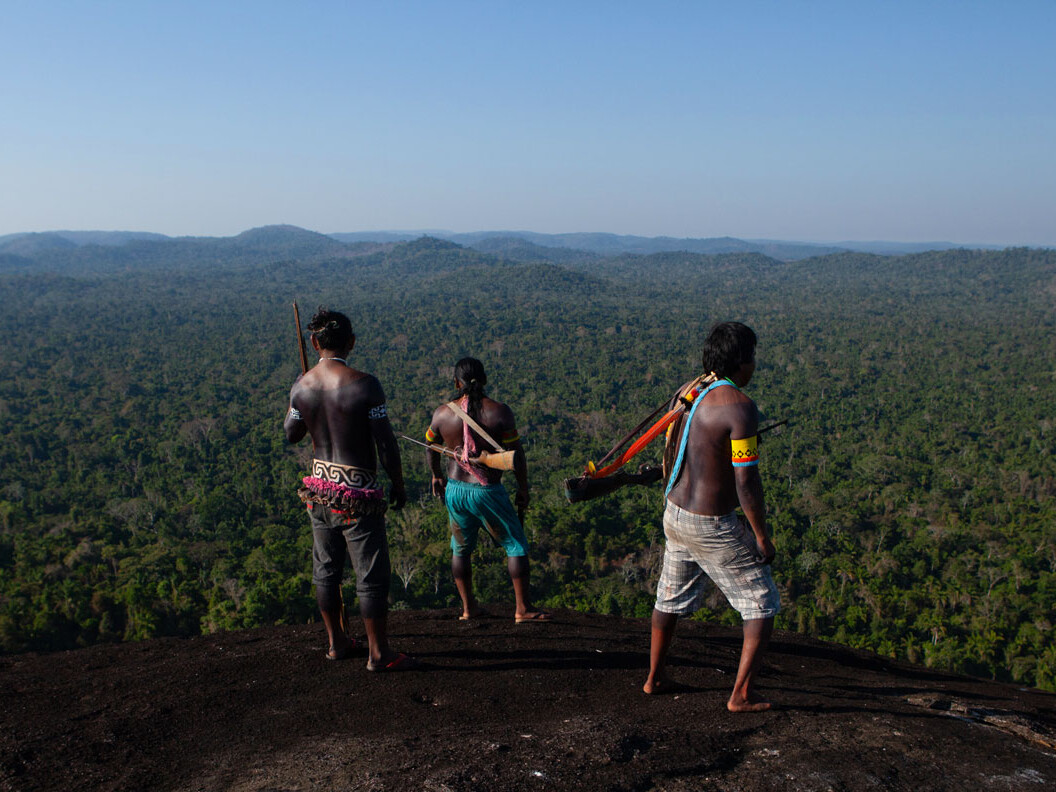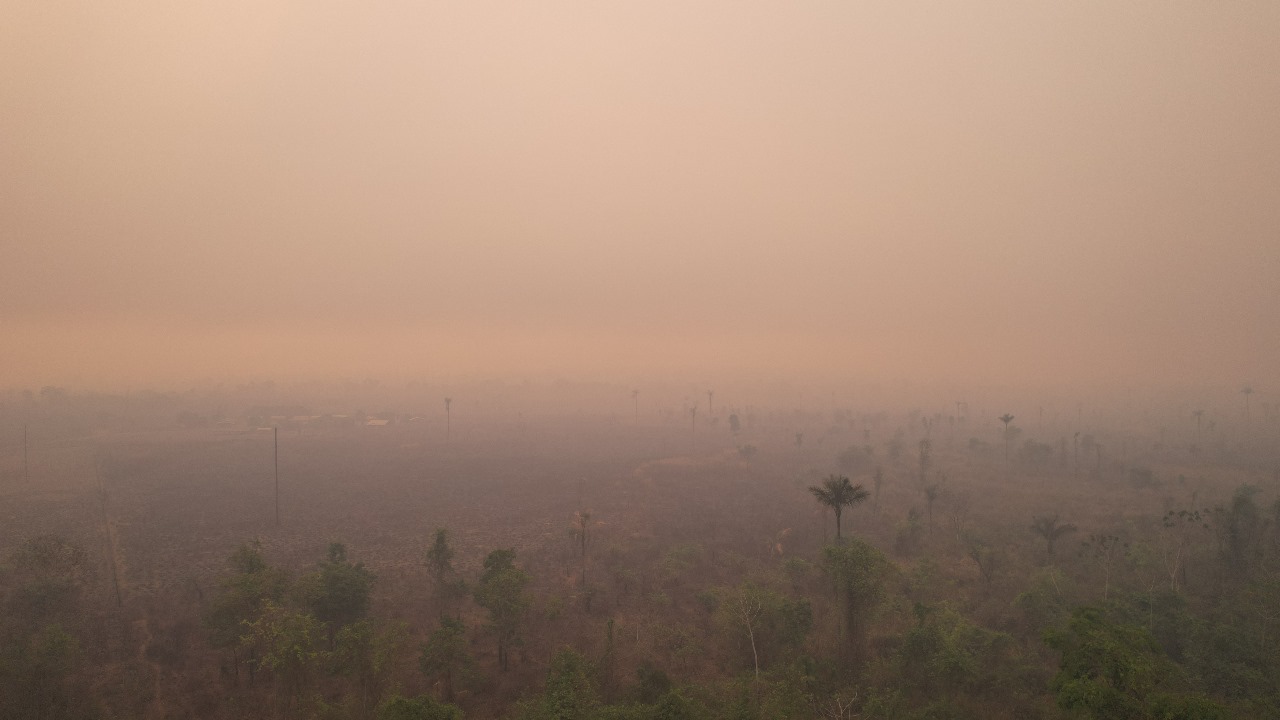Fire and Resilience: The Kayapo Fight to Preserve Their Land
The Amazon is experiencing one of the worst droughts in recorded history. Among those affected are the Kayapo, guardians of one of the largest and most biodiverse tracts of the Amazon rainforest.
A recent article on Mongabay spoke about the drought and its effects on Kayapo land, with the alarming subheading: “Almost 20% of the Kayapó Indigenous Territory has burned in this year’s Amazon drought, the worst ever recorded in Brazil.” Let’s put this very concerning information in the right context.

Did 20% of the Kayapo’s Indigenous Land Burn?
The heading from the Mongabay article implies that one fifth of Kayapo forest has been reduced to ashes. This is very far from the case.
The confusion arises from the name of one of five officially ratified and contiguous indigenous territories of the Kayapo that together form a block of 10.6 million ha. One of these five territories is called the “Kayapo Indigenous Territory” which encompasses 3.28 million ha of the total block. The article was referring to only the Kayapo Indigenous territory; or 3.28 million hectares of the Kayapo’s 10.6 million hectare forest estate. For reference, 10 million hectares is roughly three times the size of Belgium.

Photo: Martin Schoeller
The Kayapo-NGO alliance is working
The Kayapo-NGO alliance represents more than 9.1 million hectares of the overall 10.6 million hectare Kayapo territorial block. The remaining 1.5 million hectares of Kayapo territory that is located mostly along the eastern border of TI Kayapo is heavily invaded by goldmining and logging and does not form part of the Kayapo-NGO alliance.
The Kayapo living in this eastern band of the TI Kayapo succumbed to goldmining and logging pressure before conservation NGOs arrived on the scene in the 1990’s. The result has been extensive degradation of the forest and pollution of rivers in this area. Kayapo culture has suffered here as well, given their livelihoods and traditional knowledge are tied to the health of natural ecosystems. Most of this year’s fires occurred throughout this eastern band of the TI Kayapo where high intensity logging has left forests flammable. Unlogged primary forest does not burn.

The impact of gold mining in areas of Kayapo Indigenous Territory not a part of the Kayapo-NGO alliance.
The other large source of fire hotspots in Kayapo land this year was on the large patches of savanna covering rocky plateaus of the Brazilian shield where high forest cannot grow. These large savanna patches (cerrado) burn naturally every year.
However, in this brutal summer season there was anomalous burning along the floodplain borders of the Riozinho river, one of the interior rivers in the TI Kayapo. This floodplain edge was able to catch fire because of grassy and scrubby vegetation found in this semi-flooded habitat.
Although the fire in Kayapo territory was worse than normal this year, the bottom line is that over nine million hectares of the NGO-alliance remained largely intact because it is protected by Kayapo guardians and has not been degraded by illegal activity. The Kayapo forest of the allied Kayapo remains continues to demonstrate the resilience of unlogged primary forest and the effectiveness of the Kayapo-NGO alliance.
Kayapo lands of the Kayapo Project alliance are monitored and protected by the territorial surveillance program, which relies on 16 strategically placed border guard posts expeditions by foot and boat to monitor areas not covered by guard posts.


Map 1 on the left shows the 5 officially recognized Kayapo Territories: Bau Indigenous Territory, Kayapo Indigenous Territory, Menkragnoti Indigenous Territory, Capoto/Janina Indigenous Territory, Badjonkore Indigenous Territory
Map 2 on the right shows the forest fires as of September
Did 20% of the Kayapo’s Indigenous Land Burn?
The heading from the Mongabay article implies that one fifth of Kayapo forest has been reduced to ashes. This is very far from the case.
The confusion arises from the name of one of five officially ratified and contiguous indigenous territories of the Kayapo that together form a block of 10.6 million ha. One of these five territories is called the “Kayapo Indigenous Territory” which encompasses 3.28 million ha of the total block. The article was referring to only the Kayapo Indigenous territory; or 3.28 million hectares of the Kayapo’s 10.6 million hectare forest estate. For reference, 10 million hectares is roughly three times the size of Belgium.


Map 1 on the left shows the 5 officially recognized Kayapo Territories: Bau Indigenous Territory, Kayapo Indigenous Territory, Menkragnoti Indigenous Territory, Capoto/Janina Indigenous Territory, Badjonkore Indigenous Territory
Map 2 on the right shows the forest fires as of September

Photo: Martin Schoeller
The Kayapo-NGO alliance is working
The Kayapo-NGO alliance represents more than 9.1 million hectares of the overall 10.6 million hectare Kayapo territorial block. The remaining 1.5 million hectares of Kayapo territory that is located mostly along the eastern border of TI Kayapo is heavily invaded by goldmining and logging and does not form part of the Kayapo-NGO alliance.
The Kayapo living in this eastern band of the TI Kayapo succumbed to goldmining and logging pressure before conservation NGOs arrived on the scene in the 1990’s. The result has been extensive degradation of the forest and pollution of rivers in this area. Kayapo culture has suffered here as well, given their livelihoods and traditional knowledge are tied to the health of natural ecosystems. Most of this year’s fires occurred throughout this eastern band of the TI Kayapo where high intensity logging has left forests flammable. Unlogged primary forest does not burn.

The impact of gold mining in areas of Kayapo Indigenous Territory not a part of the Kayapo-NGO alliance.
The other large source of fire hotspots in Kayapo land this year was on the large patches of savanna covering rocky plateaus of the Brazilian shield where high forest cannot grow. These large savanna patches (cerrado) burn naturally every year.
However, in this brutal summer season there was anomalous burning along the floodplain borders of the Riozinho river, one of the interior rivers in the TI Kayapo. This floodplain edge was able to catch fire because of grassy and scrubby vegetation found in this semi-flooded habitat.
Although the fire in Kayapo territory was worse than normal this year, the bottom line is that over nine million hectares of the NGO-alliance remained largely intact because it is protected by Kayapo guardians and has not been degraded by illegal activity. The Kayapo forest of the allied Kayapo remains continues to demonstrate the resilience of unlogged primary forest and the effectiveness of the Kayapo-NGO alliance.
Kayapo lands of the Kayapo Project alliance are monitored and protected by the territorial surveillance program, which relies on 16 strategically placed border guard posts expeditions by foot and boat to monitor areas not covered by guard posts.
What This Means for the Future
These fires cannot be downplayed; they are a strong reminder that without conservation efforts, the rainforest will rapidly and irreversibly be destroyed. However, it’s important to note that most of the other fires occurred along the eastern band of goldmining and logging-impacted Kayapo land, where the forest has been badly degraded by these illegal activities. This distinction is critical, as it highlights the effectiveness of the Kayapo’s efforts to protect their rainforests and shows that there is still hope to protect some of the last pockets of true wilderness left on Earth.

Kayapo’s land continues to thrive under the stewardship of the Kayapo. Photo: Simone Giovine

The Kakakuben guard post on the western border
As climate change drives more extreme weather patterns—from droughts to devastating fires—it becomes even more crucial to protect the rainforest’s carbon stores and biodiversity. Indigenous guardians like the Kayapo lead this fight by safeguarding some of the largest carbon reserves on Earth, demonstrating that empowering indigenous people is one of the most effective ways to combat both local and global environmental crises.
The best news is that we know what works: empowering the Kayapo to protect their land has been one of the most successful conservation stories on Earth.

